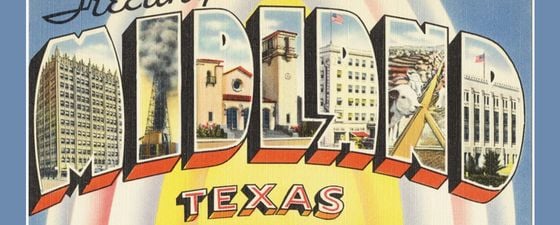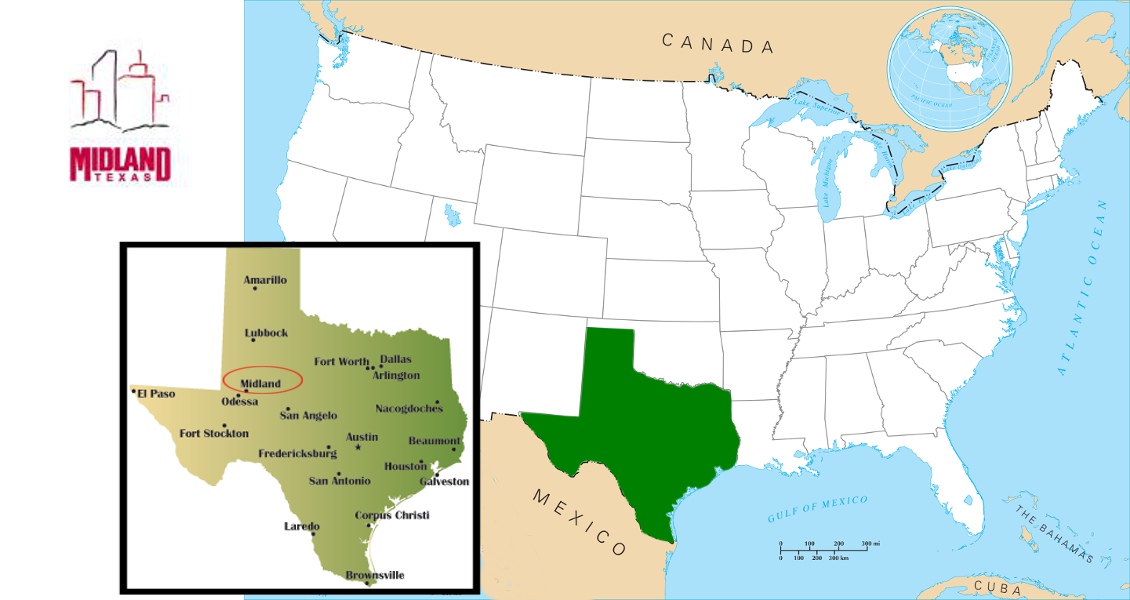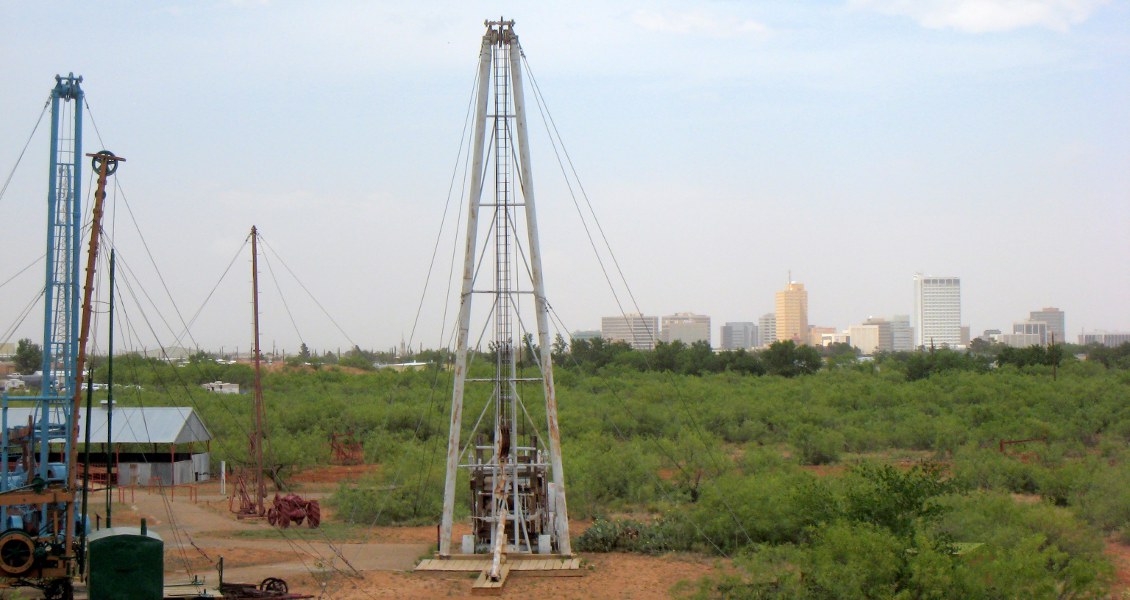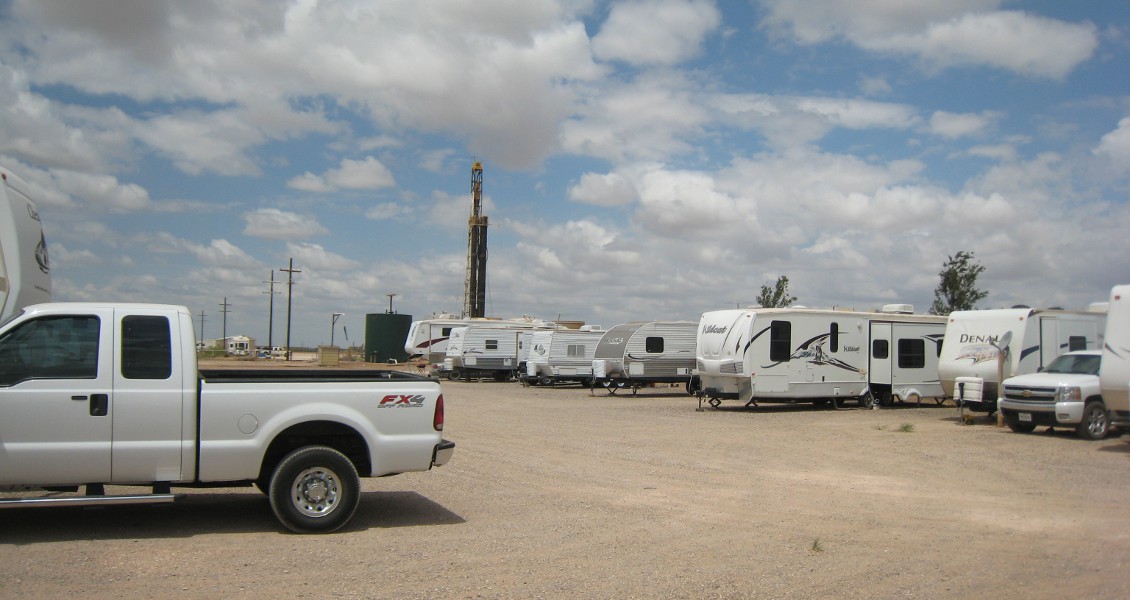Known as ‘Midway Station’ from the days of the Texas and Pacific Railway, the region’s first permanent resident, Herman Garrett, moved here from California in 1882, along with his herd of sheep. Other ranchers soon followed and a post office was granted on 4 January 1884. In order to establish this, and as other towns in Texas were already called Midway, the site was renamed Midland. By 1885, an Ohio real estate firm had bought land and promoted the site, attracting 100 families to the area. Residents all used windmill pumps to obtain water and Midland became known as the ‘Windmill Town’. By 1914, it was a thriving town of 2,500, the county seat with two banks, a cotton gin, lumber yards, four churches and an opera house. Extended droughts depressed the local economy and by 1920 the population had dropped to 1,795.
Then came the first of Midland’s oil booms.
Oil and Midland’s Ups and Downs
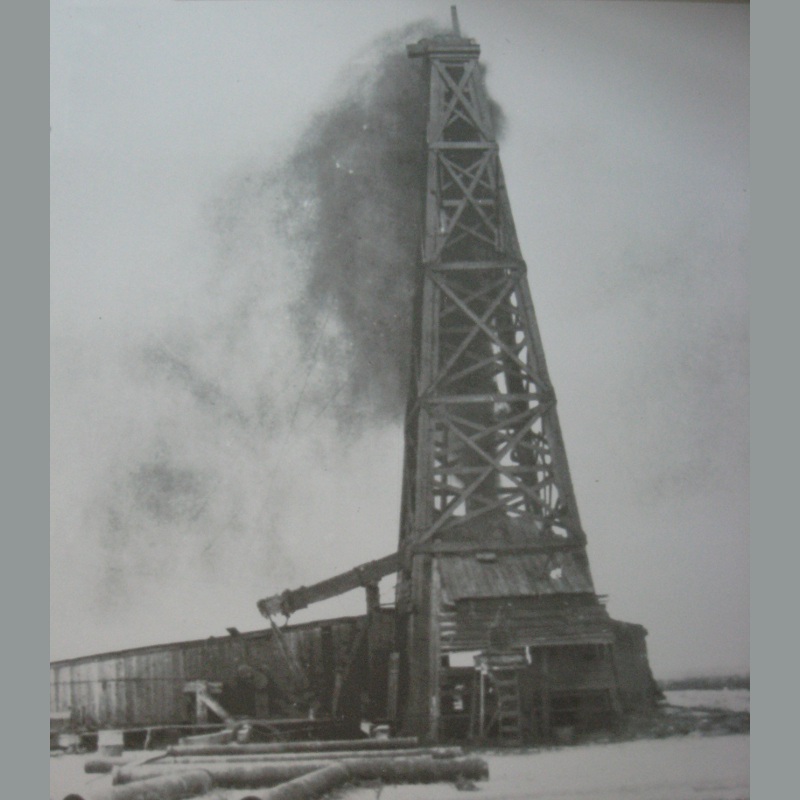
Three years after oil was discovered in the Permian Basin (see, The Permian Basin – A Brief Overview also by Thomas Smith), the Santa Rita #1 blew out hitting oil and gas in dolomitic sands called the ‘Big Lime’. It was the first of a long list of major discoveries in the 1920s that included the supergiant Yates Field in 1926. The Permian was now one of the world’s great oil-producing basins, bringing thousands of oil field workers and investors to Midland.
By 1929, thirty-six oil companies had offices in Midland. Street and lighting improvements swept across the city and new, impressive structures such as the 12-storey Hogan Building were constructed. The county sold its old courthouse for one dollar to move into a new four-storey building. The city now boasted 5,484 residents with a new airport and luxury hotels. Shortly thereafter, the Great Depression brought dramatic changes to the area. The combination of a decrease in the nation’s demand for oil and large, new oil discoveries in East Texas made for a glut of oil on the market, depressing oil prices. Many of Midland’s oil businesses folded and by 1932, a third of the town’s work force was unemployed. The local citizens showed the town’s spirit by organising the Midland Community Welfare Association to distribute food and clothing to the needy.
This economic dip was short-lived, as the Texas Railroad Commission began to regulate oil production and the federal government placed a stiff tariff on foreign oil. Dozens of new Permian Basin oil fields began producing in the late 1930s and by 1940 Midland had almost doubled in size, nearing 10,000 residents. The town continued to prosper and grow during World War II, when there was increased demand for oil and more oil field workers arrived in the city. The army also established the Midland Army Air Force Base as one of the largest training bases in the world at that time. When the base was closed in 1946, it was converted to an excellent regional airport.
As goes the Permian Basin expansion, so goes Midland. Oil and gas production from the Permian Basin greatly increased through the late 1940s. It was the period when Midland attracted a huge influx of oil investors and workers, including two future US presidents (see below). By 1950, 215 oil companies had offices in Midland and the population had nearly doubled to about 22,000; by 1960, the population had nearly tripled that, to over 63,000. The small country town had become a city with a skyline that could be seen for 30 miles.
Then the sudden drop in oil prices in 1982 ended this boom period, leaving office buildings vacant and houses unsold. Even though Midland’s economy had diversified, the primary source of prosperity for the area was the petroleum industry. With declining Permian Basin production and low oil prices, several large energy companies simply moved away, leaving their equipment to weather in the harsh Texas sun. Midland was in for a long downturn.
Enter Hydraulic Fracturing
In 2005, companies began drilling a few horizontal test wells and trying different hydraulic fracturing treatments on some of the Permian Basin’s rich source beds. Most of these early experiments proved to be uneconomic. After trying a host of methods that included gels and CO2 foams, the companies moved to slickwater completions and refined fracking methods to provide optimal rock breakage, thus increasing the surface area to be produced… the boom was on.
Midland just may be sitting on one of, if not the world’s largest oil field, with companies targeting at least six shale intervals across the 400 km by 480 km Permian Basin. Early estimates are huge, well over 50 Bbo. Midland is resurging and, not unlike the other boom times, the city is feeling the growing pains. Housing is at a premium as rents have shot up rapidly; government and schools are overwhelmed; the roads are crowded; and new high-rise office buildings are proposed for the downtown. Most residents know that a slowdown will occur and that overbuilding and expensive city projects have come back to haunt them during slow periods in the past. As the former mayor, Wes Perry, notes: “We know it was there one day and can be gone again, so we better be careful.”

